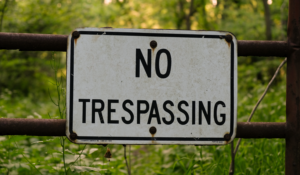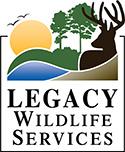
A little time spent preventing illegal activities on your hunting land will save you time and headaches later. From large timber investment tracts to smaller recreational hunting properties, all property can be impacted by security issues. Poaching, trespassing, theft, dumping or other illegal activities can destroy your enjoyment of the property that you worked hard to develop.
As a manager of hunting leases on more than 700,000 acres across the Southeast, I have found that all property owners and tenants, regardless of size or location of their property, need to address security to reduce liability and maximize enjoyment of their management efforts.
Landowners, property managers and hunters can all play a part in helping to secure a property. In fact, the closer the partnership among these parties, the better the results.
Being proactive about security issues is the best way to prevent problems, and by preventing problems you take back the time you would have spent dealing with them. You can then invest that time toward something worthwhile, like your Quality Deer Management efforts.
In this series of blog posts, I’ll offer my advice on preventing security problems based on direct experience managing hunting land and hunters. I’ll start with boundaries and gates.
Boundaries and Gates
Preventing problems begins with knowing and marking property boundaries, and this is the responsibility of the landowner, whether they hunt the land or lease the hunting rights to someone else. Clearly marked boundaries make it easier for the people who are supposed to be on the property to truly know where they are. This helps to prevent honest mistakes and dishonest ones as well.
Don’t give trespassers an excuse to say, “Well, I didn’t know where your property line was.” Having properties surveyed and corners and boundaries clearly painted will help to prevent those “mistakes.”
Hunters who lease land can help landowners to mark those boundaries by hanging POSTED – NO TRESPASSING signs at regular intervals on the boundaries. Maintaining “posted” signs can help to deter trespassing, at least by the honest folks. The rules for “posting” property are different in every state, so check with your local sheriff ’s department or wildlife conservation officer for details such as the size of the sign, the minimum distance between signs on a boundary, and whether or not they must
display the landowner’s name. Catching trespassers only to have them given a warning and sent on their way can be frustrating and counterproductive. Get familiar with the laws in your area and post accordingly.
Signs are only one method of deterrent. Restricting access with gates is also an important step. Closed and locked gates are a sign that you are serious about property security – as long as they are actually closed and locked. Gates that are constantly open or falling off the hinges do little to restrict access. Having a property gated is of little value if owners, hunters, foresters or other folks who have legitimate access to the property do not keep the gates locked. Unlocked gates are merely an invitation to joy riding, dumping, theft and other illegal activities. Don’t be tempted to think as some people do: “We leave the gates open so they think we are always there.” In some states it can be difficult to get a
court conviction if gates were open and unlocked at the time of the violation.
I hope this introduction to hunting land security is helpful. Stay tuned for more installments in this blog series covering:
- Property Appearance and Exposure
- Trail Cameras
- Neighbors and Wildlife Officers
- Confrontations
Contact Jeff to learn more about managing your hunting property. Call 877-5-TO-HUNT, or submit our contact request form.
